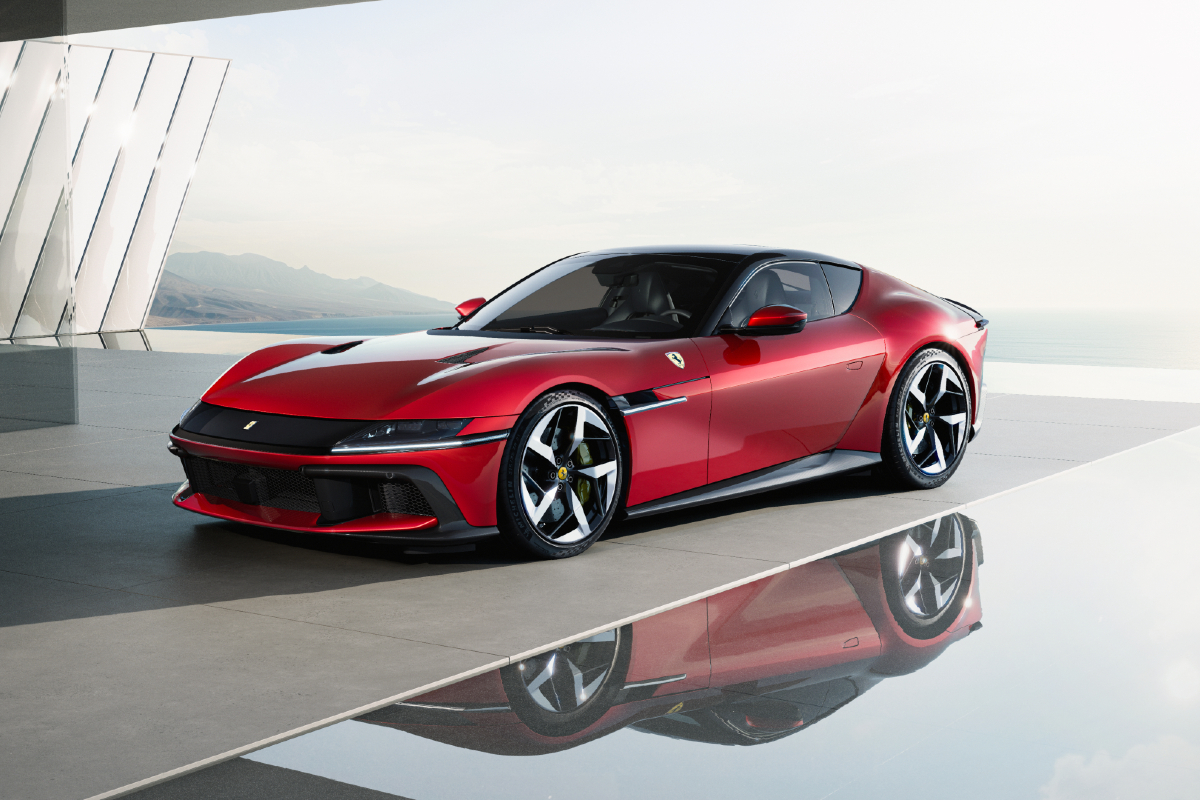
While we accept the reasons why electric cars and hybrids must exist, you’ll have to forgive us if we can’t help but become giddy at Ferrari announcing a brand new model with a naturally aspirated V12 – without a battery or electric motor in sight, save for the one connected to the starter motor.
READ MORE: Ferrari chooses V12 over EV for new 12Cilindri supercar
Ferrari’s F140HD V12 first started life in 2002 in the back of the Enzo. Today, it lives on in the 12Cilindri, the replacement for the 812 Superfast and the latest in a long line of front-engine V12 Ferraris. In this article, we explore some technical facets about this extraordinary engine.
Ferrari’s updated V12: the basics
At 6496cc in capacity, Ferrari’s new, aluminium 65-degree V12 employs double overhead cams, 48 valves, direct injection and a lofty 13.5:1 compression ratio to achieve a maximum engine speed of 9500rpm – which is insane. Outputs are 611 howling kilowatts at 9250rpm and 678Nm at a very high 7250rpm, although Ferrari says at least 540Nm is available from 2500rpm.
Incredible specific power

With its 6.5-litre capacity, specific power is 94kW/litre – not quite as lofty as the old 458 Speciale’s eye-watering 98.8kW/litre, but still impressively high, especially when there’s no turbocharger in sight. Ferrari has employed F1-inspired valvetrain technology in order to keep the engine breathing in the stratospheric revs – something assisted by shortened, variable geometry inlet tracts and six-into-one exhaust manifolds that could double as art pieces.
Reduced internal mass
In order for the engine to rev so high – without sending pistons through the bonnet – reciprocal internal mass was reduced significantly. Titanium connecting rods reduced rotating engine mass by 40 percent alone compared to steel items, while a new, lighter aluminium alloy was employed for the pistons themselves. Rebalancing the crankshaft saved a further three percent and keep in mind none of the replaced components could hardly be called heavy, either.
Meets EU6E emissions regs
Ferrari’s new V12 pokes its tongue out at strict emissions regulations by meeting the latest EU6E, China 6b and US Bin 50 requirements. That’s thanks to a ceramic catalytic converter and particulate filter, “the most advanced emissions-reduction technology available”, says Ferrari. Extensive and expensive software calibration was required to meet the regulations – without affecting the sound. Ferrari says fuel economy is still being homologated.
Massive cooling requirements

In order to keep the massive engine and all its additions cool, the 12Cilindri has no fewer than four heat exchanges. As well as the radiator and air-conditioning condenser, there are two engine oil coolers flanked on either side of the car, fed by two openings in the front bumper ahead of the front wheels.
Still rear-wheel-drive
As power outputs increase, manufacturers are switching to all-wheel-drive from two-wheel-drive as readily as they’re installing hybrid systems and electric motors. In its application of this new V12, in the 12Cilindri, Ferrari sticks to rear-wheel-drive. All the horses are channelled through an eight-speed dual-clutch paddle-shift automatic transmission to an electronically locking rear differential, then to two 315-section rear tyres. Zero to 100km/h takes a claimed 2.9sec and 0-200km/h “less than” 7.9sec – all things we can’t wait to try for ourselves, with a few tunnels woven in for good measure.

















Discussion about this post